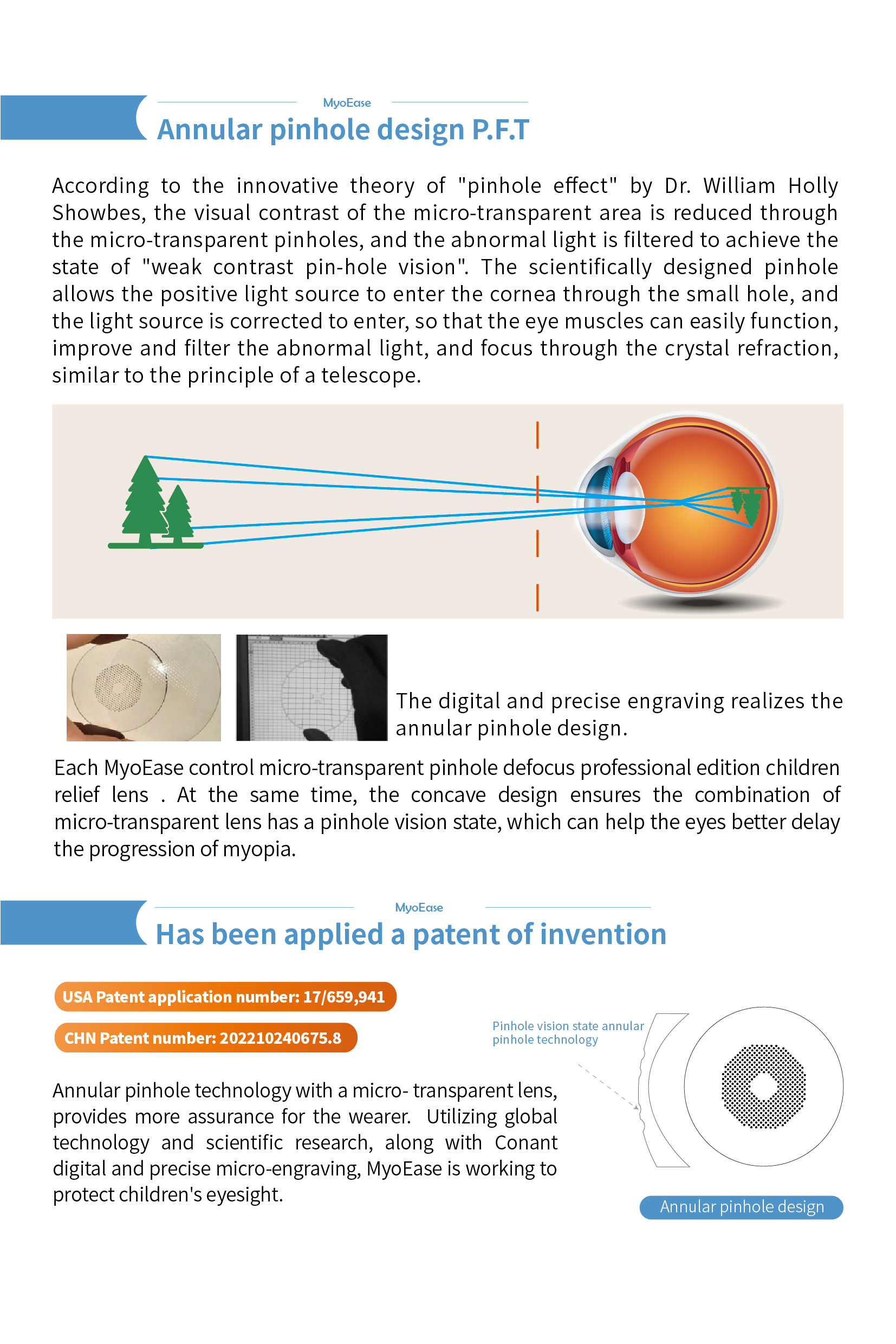MyoEaseSeries
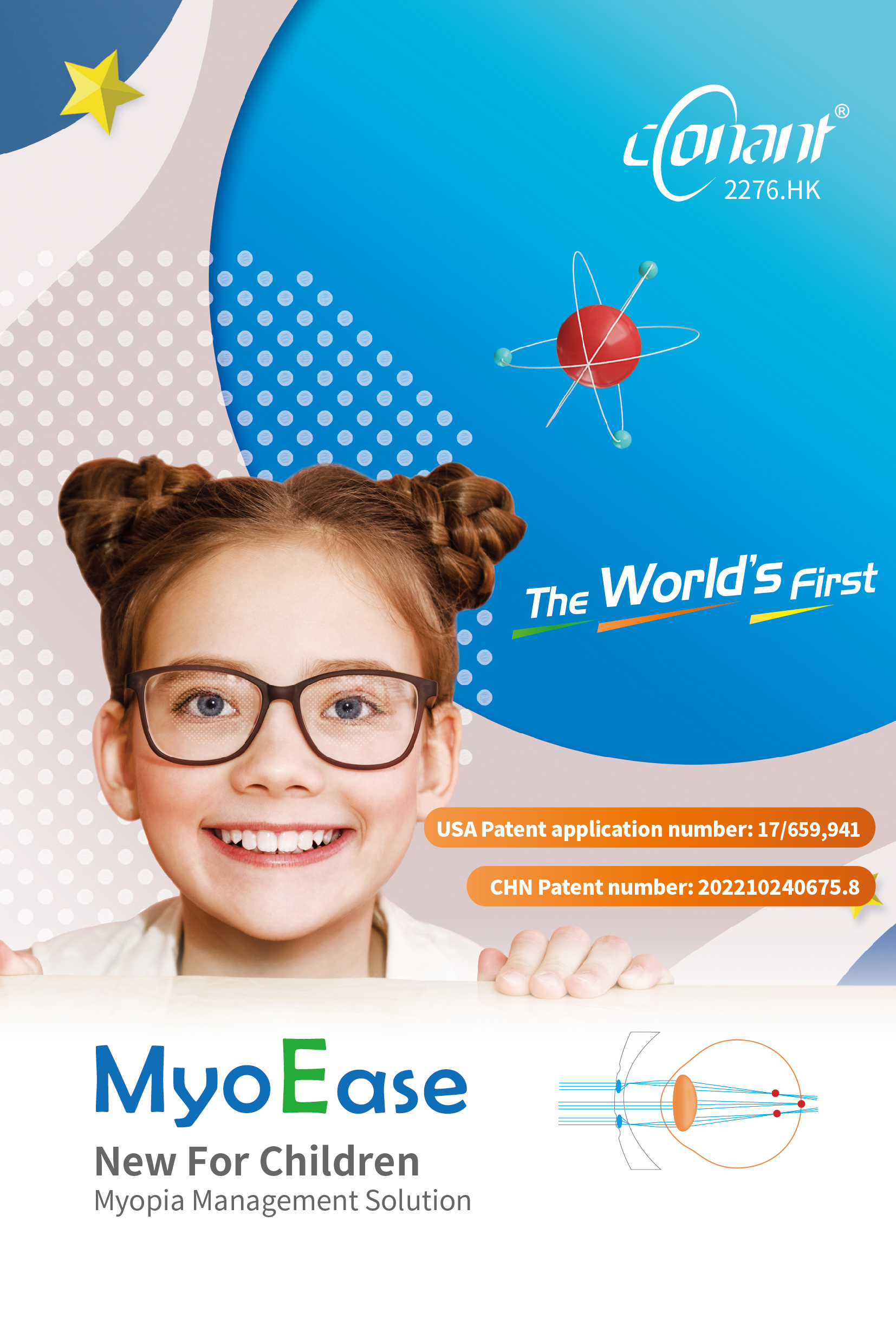
Retinal Peripheral Defocus Principle
The Retinal Peripheral Defocus Principle was established by studies from the Brien Holden Vision Institute and the University of Houston College of Optometry,
as well as many other research institutes all over the world through ten years of lab studies, eyewear design, and eyeglass wearing trials.
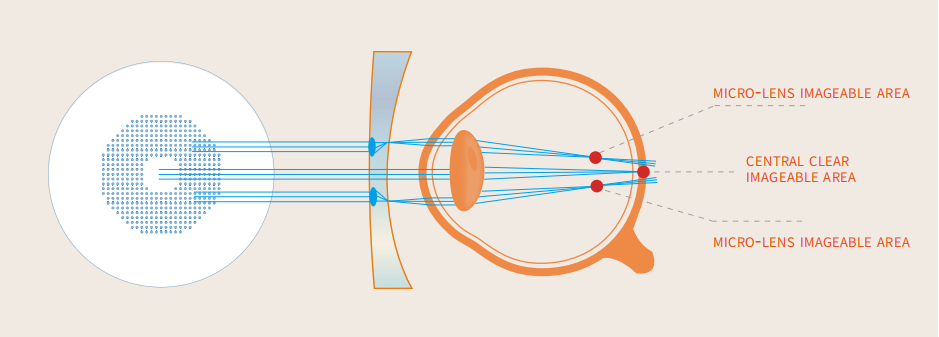
Weaken Contrast, Slow down myopia progression
Reading high contrast of black and white may be a factor of myopia progression which was proposed by the famous Optometry expert, Frank Schaeffffe.
Therefore, the right mechanism of myopia progression may be due to the contrast while reading.

This research shows, the contrast is the main reason that causes the myopia progression. The higher the contrast of the environment,
the more the eyes feel tired, the greater the degree of myopia.

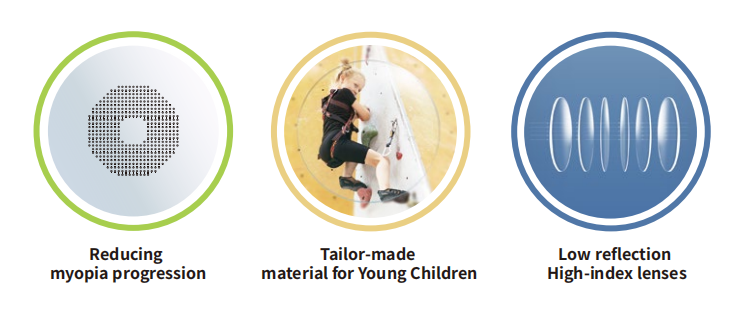
New technology, Double Effffect
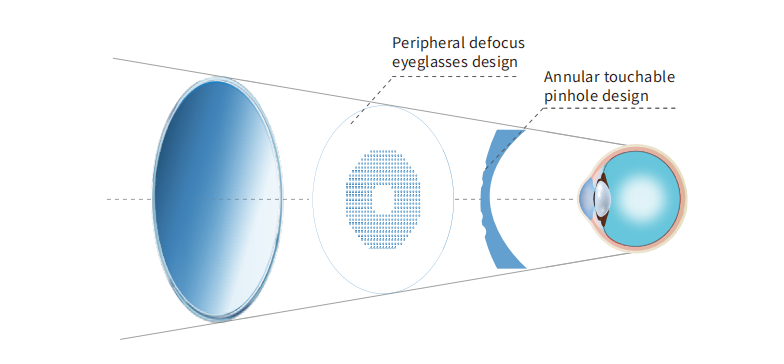

Argentine ophthalmologists proposed that ensuring the clear central optical zone, and adding the microlens defocused area surrounding can
effffectively slow down the growth of the eye axis which plays a role in defering myopia.
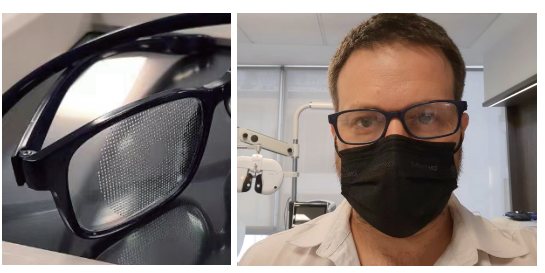
Multi-pinhole micro-transparent lens defocus design
Through digital and precise micro-engraving, the high-precision micro-transparent pinholes are evenly arranged in a ring shape to form an optical defocus area,
which is integrated into the physiological curvature of the retina to slow down the growth rate of the eye axis.
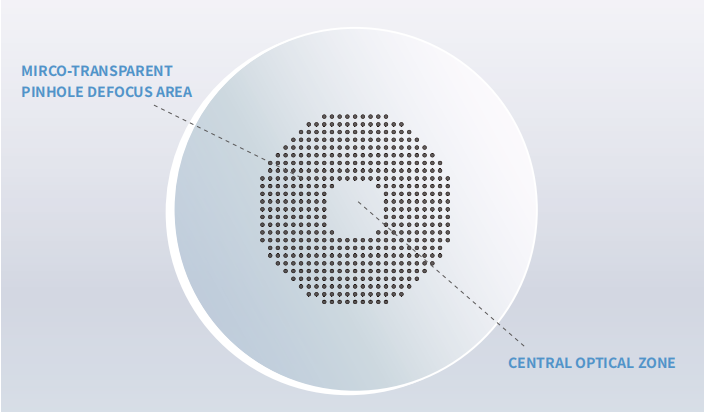
Compound eye mirco-transparent lens technology: Compound eyes are the main visual receptors of insects. Each ommatidium belongs to a separate photosensitive unit,
so each ommatidium will form a separate image point, and a ring-shaped optical defocus area is formed through compound eye bionic technology.
Digital precision micro-engraving technology: each micro-lens is precisely engraved with nanometer-level precision, while ensuring clear vision in the central area.
The annular optical defocus area can form a visual barrier to ease the growth of the eye axis.
Physiological aspherical multi-point defocusing design: we integrate the physiological aspherical design into the lens on the front surface,
and the retinal curvature is reduced outside the central light area, which improves the safety and comfort of use as a whole.
Annular touchable pinhole design P.F.T
